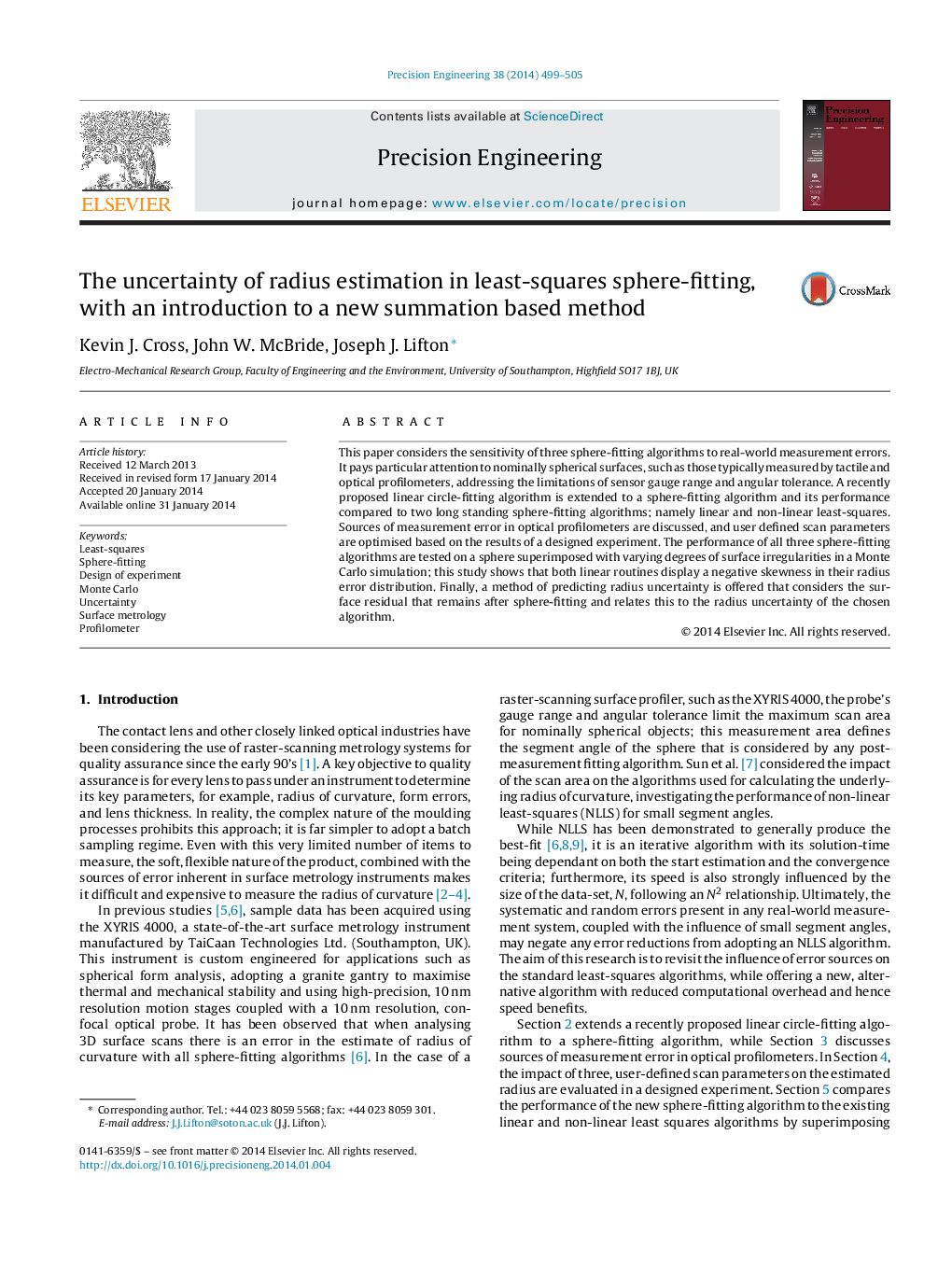| Article ID | Journal | Published Year | Pages | File Type |
|---|---|---|---|---|
| 10419467 | Precision Engineering | 2014 | 7 Pages |
Abstract
This paper considers the sensitivity of three sphere-fitting algorithms to real-world measurement errors. It pays particular attention to nominally spherical surfaces, such as those typically measured by tactile and optical profilometers, addressing the limitations of sensor gauge range and angular tolerance. A recently proposed linear circle-fitting algorithm is extended to a sphere-fitting algorithm and its performance compared to two long standing sphere-fitting algorithms; namely linear and non-linear least-squares. Sources of measurement error in optical profilometers are discussed, and user defined scan parameters are optimised based on the results of a designed experiment. The performance of all three sphere-fitting algorithms are tested on a sphere superimposed with varying degrees of surface irregularities in a Monte Carlo simulation; this study shows that both linear routines display a negative skewness in their radius error distribution. Finally, a method of predicting radius uncertainty is offered that considers the surface residual that remains after sphere-fitting and relates this to the radius uncertainty of the chosen algorithm.
Related Topics
Physical Sciences and Engineering
Engineering
Industrial and Manufacturing Engineering
Authors
Kevin J. Cross, John W. McBride, Joseph J. Lifton,
